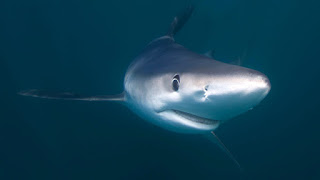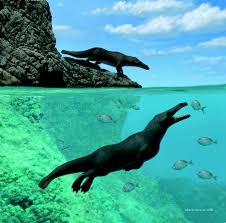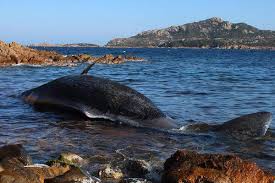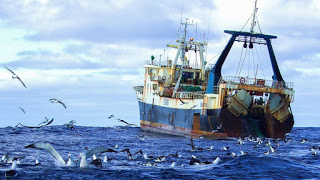EU passes single-use plastic ban, New treaty could protect life in international waters, Toxins found in great white sharks, Plastic pollution costs the world billion, Totoaba poachers shot in Mexico, Canadian shark fin bill stalls and more
1. European Parliament Passes Single-use Plastic Ban
Dateline 27 March 2019: The European Parliament has approved a law to ban single-use plastic by 2021 in the EU. The ‘Single-Use Plastics Directive’ puts in place more responsibility for plastic producers and new recycling targets for EU member States. The law recognizes plastic as “increasingly ubiquitous in everyday life,” and states that plastic’s growing use in short-lived applications “which are not designed for re-use or cost-effective recycling, means that related production and consumption patterns have become increasingly inefficient and linear.” The law describes the European Strategy for Plastics as a “step towards establishing a circular economy in which the design and production of plastics and plastic products fully respect reuse, repair and recycling needs and in which more sustainable materials are developed and promoted.”
2. Hawaii Senate Bill 489
To put an end to shark finning this bill establishes an offense of knowingly capturing, taking, possessing, abusing, entangling, or killing a shark in state marine waters, along with penalties and fines. Expands the existing prohibition on knowingly capturing or killing a manta ray in state marine waters to apply to all rays and to also include knowingly taking, possessing, abusing, or entangling a ray. Provides certain exemptions. (SD2)
The sponsor of a bill that would ban the import and export of shark fins in Canada says he’s disappointed the federal government is looking to make amendments at the 11th hour when it’s had two years to bring them forward. During second reading debate on Bill S-238, the Ban on Shark Fin Importation and Exportation Act, on Monday night, Sean Casey, parliamentary secretary to the minister of fisheries and oceans, told the House of Commons that while the government supports the bill, it may need amendments to avoid violating international trade agreements.
4. 18th Meeting of the Conference of the Parties of the Convention on International Trade in Endangered Species of Wild Fauna and Flora (CITES CoP18)
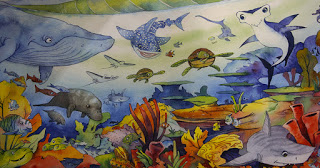 The eighteenth meeting of the Conference of the Parties of the Convention on International Trade in Endangered Species of Wild Fauna and Flora (CITES CoP18) will meet in Colombo, Sri Lanka from 23 May – 3 June 2019. Decisions taken in Colombo will have a real and immediate effect on the legislation, regulation, and operating practices across the globe for international trade in species listed on the CITES Appendices. The CoP18 decisions will also have direct impacts on biodiversity, people’s livelihoods, and national economies.
The eighteenth meeting of the Conference of the Parties of the Convention on International Trade in Endangered Species of Wild Fauna and Flora (CITES CoP18) will meet in Colombo, Sri Lanka from 23 May – 3 June 2019. Decisions taken in Colombo will have a real and immediate effect on the legislation, regulation, and operating practices across the globe for international trade in species listed on the CITES Appendices. The CoP18 decisions will also have direct impacts on biodiversity, people’s livelihoods, and national economies.
Picture an animal that looks like a mix between a rhino and a sea otter: It has a narrow head; a long, muscular tail; and four stocky legs with hoofed toes and webbed feet. A new study suggests that’s more or less what the walking, swimming ancestors of modern-day whales looked like about 43 million years ago. Researchers unearthed the well-preserved bones of an ancient four-legged whale on the coast of Peru, and they detailed their findings in a paper published today (April 4) in the journal Current Biology. “It’s one of those discoveries that shows how little you know,” said Jonathan Geisler, an evolutionary biologist and anatomist at the New York Institute of Technology, who wasn’t involved with the study. “So that, I think, is very exciting.”
 Plastic pollution in the world’s oceans costs society billions of dollars every year in damaged and lost resources, research has found. Fisheries, aquaculture, recreational activities and global wellbeing are all negatively affected by plastic pollution, with an estimated 1-5% decline in the benefit humans derive from oceans. The resulting cost in such benefits, known as marine ecosystem value, is up to $2.5bn (£1.9bn) a year, according to a study published this week in Marine Pollution Bulletin.
Plastic pollution in the world’s oceans costs society billions of dollars every year in damaged and lost resources, research has found. Fisheries, aquaculture, recreational activities and global wellbeing are all negatively affected by plastic pollution, with an estimated 1-5% decline in the benefit humans derive from oceans. The resulting cost in such benefits, known as marine ecosystem value, is up to $2.5bn (£1.9bn) a year, according to a study published this week in Marine Pollution Bulletin.
9. Scientists Urge UN to Create Protected Zone Across Third of Planet’s Oceans
 To put an end to the bestial act of shark finning, legislation sponsored by Assembly Democrats Raj Mukherji, John Armato and Vincent Mazzeo to ban the harvest and sale of shark fins in New Jersey was released by the Assembly Appropriations Committee Monday. A recent increase in the demand for shark fin soup has called attention to shark finning. The practice entails severing a live shark’s fins from its body, thus rendering it immobile, and returning it to the water. The practice results in a painful death for the shark. Biological processes by ocean creatures which see carbon captured at the surface of the sea and stored deep below also play an important role in reducing carbon dioxide in the atmosphere.
To put an end to the bestial act of shark finning, legislation sponsored by Assembly Democrats Raj Mukherji, John Armato and Vincent Mazzeo to ban the harvest and sale of shark fins in New Jersey was released by the Assembly Appropriations Committee Monday. A recent increase in the demand for shark fin soup has called attention to shark finning. The practice entails severing a live shark’s fins from its body, thus rendering it immobile, and returning it to the water. The practice results in a painful death for the shark. Biological processes by ocean creatures which see carbon captured at the surface of the sea and stored deep below also play an important role in reducing carbon dioxide in the atmosphere.
———————————————-
10. Stunning ‘Mirror Pools’ Seen on Ocean’s Floor Reveal Otherworldly Landscape

Scientists have discovered a strange and mesmerizingly beautiful space thousands of feet below the ocean’s surface. The otherworldly ecosystem features 75-foot towers containing volcanic flanges that create the illusion of looking at a mirror when one observes the super-hot hydrothermal fluids beneath them. The gorgeous visuals provide a rare window into a world that looks like something cooked up by James Cameron for the “Avatar” sequels.
11. Great White Sharks Surviving with Toxic Levels of Mercury and Lead in their Blood
Levels of toxic mercury, arsenic and lead have been found at shockingly high levels in the blood of great white sharks swimming off the coast of South Africa. Despite being present at concentrations that would kill most animals, these toxins appear to have no effect on the enormous predatory fish.The scientists undertaking the tests think the sharks may have a special ability to resist the dangerous effects of the heavy metals. As great whites are top predators, they accumulate high volumes of toxins in their bodies from all the other creatures they eat. “By measuring concentrations of toxins, such as mercury and arsenic, in the blood of white sharks, they can act as ‘ecosystem indicators’ for the health of the ecosystem, with implications for humans,” said Dr Neil Hammerschlag, a co-author of the study at the University of Miami.
12. Suspected Totoaba Poachers Shot by Authorities in Mexico’s Sea of Cortez
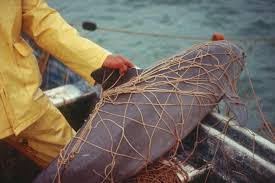 Three suspected totoaba poachers were reportedly shot yesterday by Mexican marines following a confrontation over illegal gillnets that had been confiscated. According to local news outlet Fronteras, the governor of the Mexican state of Baja California, Francisco Vega, has confirmed that three people were injured in a shootout between suspected poachers and Mexican marines early Thursday morning in San Felipe, a small fishing town on the coast of the Sea of Cortez. Fronteras reports that one of the suspected poachers, Enrique García Sandez, a 37-year-old fisherman, was transported to a hospital in Mexicali with serious injuries.
Three suspected totoaba poachers were reportedly shot yesterday by Mexican marines following a confrontation over illegal gillnets that had been confiscated. According to local news outlet Fronteras, the governor of the Mexican state of Baja California, Francisco Vega, has confirmed that three people were injured in a shootout between suspected poachers and Mexican marines early Thursday morning in San Felipe, a small fishing town on the coast of the Sea of Cortez. Fronteras reports that one of the suspected poachers, Enrique García Sandez, a 37-year-old fisherman, was transported to a hospital in Mexicali with serious injuries.———————————————-
———————————————-
No flag can claim the high seas, but many nations exploit them. As a result, life in the two-thirds of the oceans beyond any country’s territorial waters faces many threats that are largely unregulated, including overfishing and the emerging deep-sea mining industry. Now, nations are negotiating the first-ever high-seas conservation treaty, which the United Nations expects to finalize next year. As delegates met this week at U.N. headquarters in New York City to hash out the details, marine scientists moved to influence the outcome. expansive new marine reserves to protect key high-seas ecosystems.
———————————————–
15. How the Oceans Have Become Hostile for Animals
Traditionally, the ocean wasn’t all that hostile of a place to live. The species that make the ocean their home have evolved over millennia to thrive in its depths. What seems mind-boggling to us—a fish’s ability to live five miles under the sea, for instance—is just life for other animals. “That environment’s not hostile to them—its like us being in our living rooms,” says Matthew Savoca, a postdoctoral researcher at Stanford University’s Hopkins Marine Station, in Monterey.



